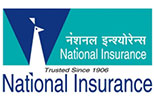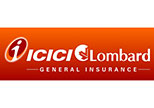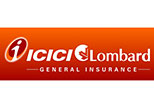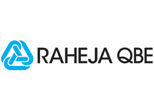Deduction Under Section 80C in India Explained
Ever wished there was a way to pay less in taxes and keep more of your money? Well, guess what? Deduction Under Section 80C of the Income Tax Act, 1961, can help you with it. Section 80C is like a game-changer in the world of taxes that allows individuals and Hindu Undivided Families (HUFs) to cut down their taxable income by investing in specified financial instruments.
So, if you want to know in detail about such financial instruments and tax benefits under Section 80C then you are at the right place. Here, we have covered everything you need to know about Section 80C of the Income Tax Act.
Table of Contents
What Does Section 80C of the Income Tax Act Mean?

Section 80C of the Income Tax Act, 1961, offers health insurance tax benefits for specific expenses and investments. The deduction under Section 80C allows individuals and Hindu Undivided Families to reduce their taxable income by a maximum of Rs. 1,50,000 per year. In other words, we can say that Section 80C serves as a deduction tool, helping individuals lower their taxable income and, consequently, reducing their tax liability.
Who Can Benefit from Section 80C?
Individual taxpayers and Hindu Undivided Families can take advantage of tax benefits under Section 80C. However, this benefit does not apply to corporate bodies, partnership firms, and other businesses.
Claiming Deductions under Section 80C
To benefit from Section 80C of the Income Tax Act, you need to strategically plan your investments. Multiple instrument options such as ULIP, PPF, and more. can be utilised to diversify investments and claim deductions up to Rs. 1,50,000.
Sub-sections of Section 80C
The Income Tax Act divides deductions under Section 80C into specific sub-sections. These sub-sections list various investment options eligible for tax exemptions. You can refer to the table below to know more.
|
Section |
Eligible Investments |
Maximum Deduction |
|
80C |
EPF, PPF, life insurance premiums, ELSS, home loan principal, SSY, NSC, SCSS, etc. |
Rs. 1,50,000 |
|
80CCC |
Pension plans, mutual funds |
Rs. 1,50,000 |
|
80CCD(1) |
Government-backed schemes like NPS, Atal Pension Yojana, etc. |
Self-Employed - 20% of Gross Income Employed - 10% of the salary + DA |
|
80CCD(1B) |
NPS investments |
Rs.50,000 |
|
80CCD(2) |
Employer's NPS contribution (up to 10% of basic salary + Dearness Allowance) |
10% of the salary + DA |
How Much Can Be Claimed under Section 80C?
When it comes to deductions under 80c under Section 80C, there are specific limits tied to different investment options. The total amount that you can claim under Sections 80C, 80CCC, and 80CCD(1) combined is Rs. 1,50,000.
But, you have the opportunity to boost this total deduction by an additional Rs. 50, 000 through Section 80CCD. This section relates to contributions made by the employee and the employer.
Top 7 Section 80C Instruments and their Taxation Rules
Here are the top seven 80c tax deduction choices in accordance with the Income Tax Act, 1961:
1. Life Insurance Premiums
When you pay premiums for life insurance policies, you can get tax benefits. These benefits apply to policies for yourself, your spouse, and dependent children. Even Hindu Undivided Family members can get these benefits. But if you pay for your parents or parents-in-law, you won't get this benefit.
Currently, you don't have to pay taxes on an annual premium that's up to 10% of the total sum assured. However, if you have more than one life insurance policy, you can still get tax benefits on all of them, but only up to Rs. 1,50,000.
Also, remember that getting life insurance not only helps you save on income tax but also safeguards your loved ones financially from life's unexpected challenges.
2. Public Provident Funds
Contributions to the Public Provident Fund (PPF) are eligible for tax deduction under Section 80C. The maximum deposit limit for PPF is Rs. 1,50,000, and investors can claim the entire deposited amount as a deduction under Section 80C.
Additionally, any voluntary contributions made by an employee to the provident fund are also eligible for tax deduction under Section 80C of the Income Tax Act.
3. Unit Linked Insurance Plans (ULIPs)
Unit Linked Insurance Plans (ULIPs) provide higher long-term returns compared to traditional insurance policies. It offers both life cover and investment benefits, providing a dual advantage. In addition to this dual benefit, ULIPs also offer income tax savings of up to Rs. 1,50,000 under Section 80C on the invested amount. This tax-deduction benefit is applicable up to either 10% of the sum assured or annual premiums, whichever is lower.
4. Tax Saving Fixed Deposit (FD)
Another popular instrument for availing deduction under 80C of the Income Tax Act is Taxing Saving FD. Tax Saving Fixed Deposits (FDs) are deposit schemes provided by banks and post offices that qualify for tax deductions under Section 80C. These FDs come with a lock-in period of 5 years and offer a maximum tax exemption of Rs. 1,50,000 on the principal amount. It's important to note that the returns from these instruments are subject to taxation.
5. National Pension Scheme (NPS)
Contributions to the National Pension Scheme qualify for tax deductions under Section 80CCD, which is a part of Section 80C of the Income Tax Act. However, the total deduction under Section 80C and Section 80CCD (1) combined cannot be more than Rs. 1,50,000.
Furthermore, in case you contribute an additional Rs. 50,000 to NPS, beyond the Section 80C limit of Rs. 1,50,000, the entire amount can be claimed as a deduction under Section 80CCD (1B).
To put it simply, you can get a tax deduction on NPS contributions up to Rs. 1,50,000 under Section 80C and an additional Rs. 50,000 under Section 80CCD (1B).
NOTE: The extra NPS tax deduction of Rs. 50,000 is applicable only if you have a Tier 1 NPS account.
6. Equity Linked Savings Scheme (ELSS)
Equity-Linked Saving Schemes, also known as ELSS, are investment schemes that have a mandatory lock-in period of 3 years. This instrument provides income tax saving benefits on the amount invested in the fund and there is no upper limit on the amount you can invest in ELSS. However, the income tax saving benefit is available only up to the total limit specified under Section 80C i.e. Rs. 1,50,000.
7. Sukanya Samriddhi Yojana
Aligned with the Beti Bachao, Beti Padhao campaign, Sukanya Samriddhi Yojana was inaugurated on 22nd January 2015 by Prime Minister Narendra Modi. It is a savings scheme specifically designed for girl children and qualifies for an 80C deduction under the Income Tax Act. This account is intended for girls under 10 years of age, and a maximum of 2 accounts can be opened, each eligible for income tax deductions under Section 80C.
NOTE: The minimum deposit limit for this account is Rs. 250 annually, and the maximum limit is Rs 1,50,000.
Conclusion
Section 80C of the Income Tax Act is your go-to tool for saving on taxes. It lets you cut down your taxable income by up to Rs. 1,50,000 every year. And, to make the most of it, it's important to choose smart investment options like life insurance, PPF, ULIPs, etc.
Remember, each option has its own perks, so pick what suits your needs. By doing this wisely, you will not only save on taxes but also secure your family's future.
Frequently Asked Questions (FAQs)
Q 1. What is Section 80C?
Ans. Section 80C is a part of the Income Tax Act that allows individuals and families to reduce their taxable income by up to Rs. 1,50,000 through various investments.
Q 2. Who can benefit from Section 80C?
Ans. Individual taxpayers and Hindu Undivided Families (HUFs) can take advantage of the tax benefits offered by Section 80C. However, it does not apply to companies or partnerships.
Q 3. How much can I claim under Section 80C?
Ans. The total deduction limit under Sections 80C, 80CCC, and 80CCD(1) combined is Rs. 1,50,000. An additional Rs. 50,000 can be claimed through Section 80CCD but certain terms and conditions must be met for this.
Q 4. What are some popular Section 80C investments?
Ans. Some of the popular Section 80C investment options include life insurance premiums, Public Provident Funds (PPF), Unit Linked Insurance Plans (ULIPs), Tax Saving Fixed Deposits, National Pension Scheme (NPS), etc.


















































